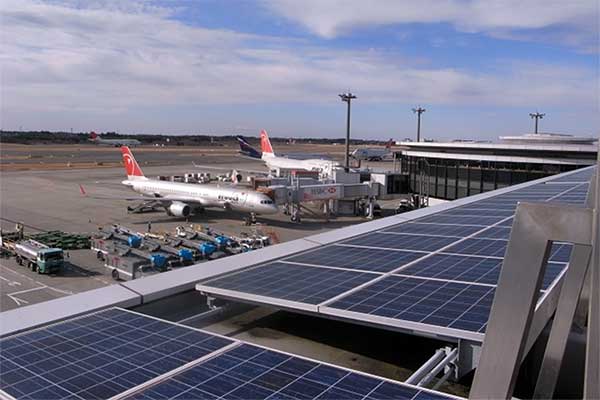- Airports provide an ideal venue for studying how institutional arrangements shape renewable energy deployment.
- University of Colorado Denver School of Public Affairs researcher analyzes the use of solar energy at US airports.
- Discovers that airports involved in professional organizations are more likely to deploy solar panels.
By studying 488 public airports in the United States, the University of Colorado Denver School of Public Affairs researcher Serena Kim, Ph.D., found that 20% of them have adopted solar photovoltaic (PV), commonly known as solar panels, over the last decade. Solar photovoltaic (PV) is the conversion of light into electricity using semiconducting materials that exhibit the photovoltaic effect.
While studying institutional arrangements as a factor that contributes to airport solar PV deployment, Kim found that airports operated by general-purpose governments (cities, states, or counties) have deployed solar panels more than special-purpose governments (port or airport authorities) as of 2020.
Kim discovered that airports involved in professional organizations are more likely to deploy solar panels, but this relationship is contingent on airport governance. Kim discovered that airports involved in professional organizations are more likely to deploy solar panels, but with a higher rate for special-purpose airports than general-purpose airports.
According to Kim, airports provide an ideal venue for studying how institutional arrangements shape renewable energy deployment due to the notable differences between the general-purpose and special-purpose airports. The biggest difference between these two types of airports is how each selects its board members. More than 80% of general-purpose board members are elected, while only 7% of special-purpose airport board members are elected.
“Airport board members, directors, and managers’ leadership, and their interactions with other airport professionals can promote renewable energy transitions at airports,” said Kim.
Colorado Connection
One of the airports studied was Denver International Airport (DIA, as state residents know it, although the official abbreviation is DEN). Since 2008, DIA has become one of the largest solar projects in the U.S., installing 42,614 solar panels on a total of 56 acres.
According to airport officials interviewed for the study, DIA has been successful in rolling out solar energy because of support from the city government, airport leadership, and its electricity provider, Xcel Energy. Being at the forefront of on-site solar energy at airports, DIA has built an economically and environmentally sustainable energy management system. While reducing the airport’s carbon footprint by operating 10 megawatts (MW) solar facilities, DIA pays less than the average electricity cost for the energy generated from the solar arrays built after 2012. Excess electricity is sold back to the utility under the Xcel Solar Rewards program. All contracts go through the city council approval process, and the aviation department works closely with the city government’s sustainability department.
“DIA’s solar energy project is an example of successful collaborative partnerships,” said Kim. “All solar arrays at DIA are developed by public-private partnerships. Private solar companies own and operate the solar systems, and DIA executes power purchase agreements with the private solar companies. Xcel Energy plays a key role in the partnership as they offer rebates to offset the construction costs, purchase excess energy, and retain renewable energy certificates.”
Other airports involved in this study include Minneapolis-St. Paul International Airport, Tallahassee International Airport, and Orlando International Airport.
Next Steps for Policymakers
According to Kim’s research findings, on-site solar deployment potentials are shaped by utilities’ engagement and interest in renewable energy development. Airport solar energy is more likely to appear in the service area of investor-owned utilities, which have greater resources and expertise to invest in renewable energy.
“Accessing clean, reliable, and affordable energy is integral to resilient, sustainable, and equitable futures,” said Kim. “Policymakers who wish to facilitate on-site solar use should consider strategies for addressing resource and information gaps across investor-owned utilities, municipal utilities, and rural electric cooperatives.”







Comments